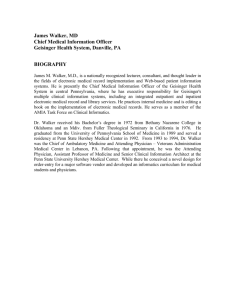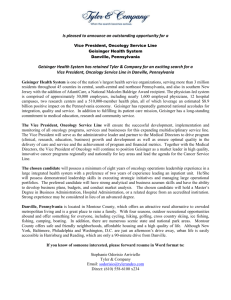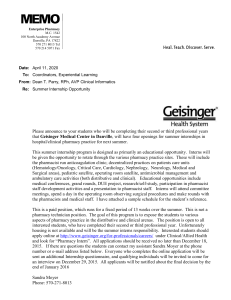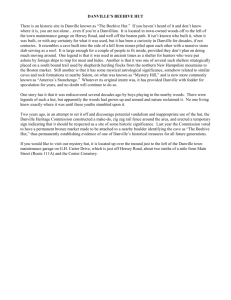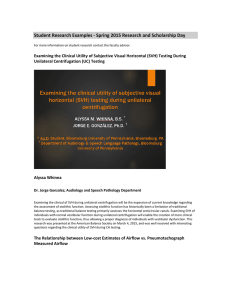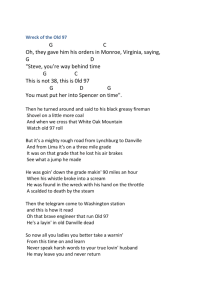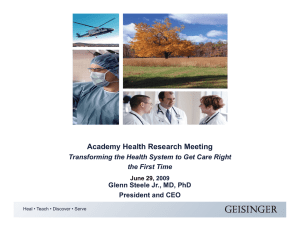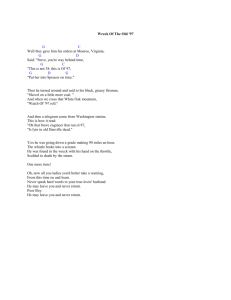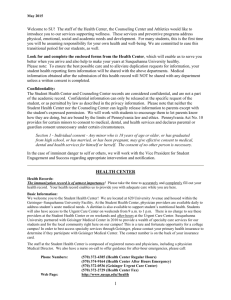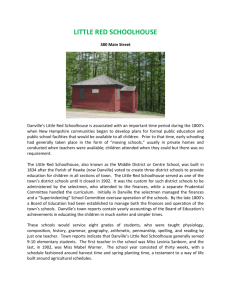Grand Geisinger
advertisement
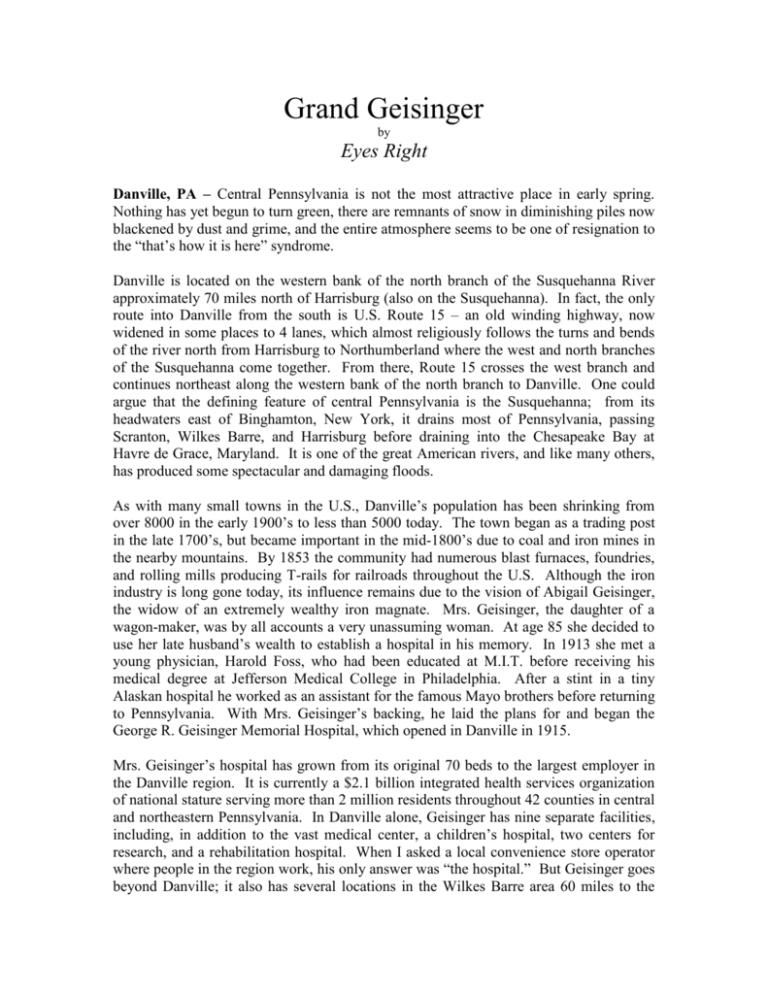
Grand Geisinger by Eyes Right Danville, PA – Central Pennsylvania is not the most attractive place in early spring. Nothing has yet begun to turn green, there are remnants of snow in diminishing piles now blackened by dust and grime, and the entire atmosphere seems to be one of resignation to the “that’s how it is here” syndrome. Danville is located on the western bank of the north branch of the Susquehanna River approximately 70 miles north of Harrisburg (also on the Susquehanna). In fact, the only route into Danville from the south is U.S. Route 15 – an old winding highway, now widened in some places to 4 lanes, which almost religiously follows the turns and bends of the river north from Harrisburg to Northumberland where the west and north branches of the Susquehanna come together. From there, Route 15 crosses the west branch and continues northeast along the western bank of the north branch to Danville. One could argue that the defining feature of central Pennsylvania is the Susquehanna; from its headwaters east of Binghamton, New York, it drains most of Pennsylvania, passing Scranton, Wilkes Barre, and Harrisburg before draining into the Chesapeake Bay at Havre de Grace, Maryland. It is one of the great American rivers, and like many others, has produced some spectacular and damaging floods. As with many small towns in the U.S., Danville’s population has been shrinking from over 8000 in the early 1900’s to less than 5000 today. The town began as a trading post in the late 1700’s, but became important in the mid-1800’s due to coal and iron mines in the nearby mountains. By 1853 the community had numerous blast furnaces, foundries, and rolling mills producing T-rails for railroads throughout the U.S. Although the iron industry is long gone today, its influence remains due to the vision of Abigail Geisinger, the widow of an extremely wealthy iron magnate. Mrs. Geisinger, the daughter of a wagon-maker, was by all accounts a very unassuming woman. At age 85 she decided to use her late husband’s wealth to establish a hospital in his memory. In 1913 she met a young physician, Harold Foss, who had been educated at M.I.T. before receiving his medical degree at Jefferson Medical College in Philadelphia. After a stint in a tiny Alaskan hospital he worked as an assistant for the famous Mayo brothers before returning to Pennsylvania. With Mrs. Geisinger’s backing, he laid the plans for and began the George R. Geisinger Memorial Hospital, which opened in Danville in 1915. Mrs. Geisinger’s hospital has grown from its original 70 beds to the largest employer in the Danville region. It is currently a $2.1 billion integrated health services organization of national stature serving more than 2 million residents throughout 42 counties in central and northeastern Pennsylvania. In Danville alone, Geisinger has nine separate facilities, including, in addition to the vast medical center, a children’s hospital, two centers for research, and a rehabilitation hospital. When I asked a local convenience store operator where people in the region work, his only answer was “the hospital.” But Geisinger goes beyond Danville; it also has several locations in the Wilkes Barre area 60 miles to the east and in State College, 80 miles to the west. It has become arguably the preeminent rural medical facility in the United States attracting top physicians from around the world. It certainly has one of the top P.R. organizations which pumps out several press releases daily in addition to maintaining a state-of-the-art interactive website. Perhaps the most interesting aspect of Geisinger is that they have their own health insurance plan, both for employers and for individuals without group coverage. It is not clear exactly how Geisinger will fare under a national health plan, but one has to be impressed at how one 85-year old widow’s vision has transformed central Pennsylvania. I thought you might like to know. E-R
